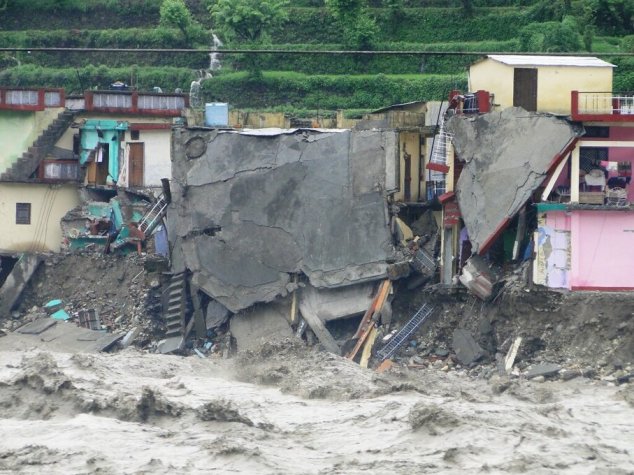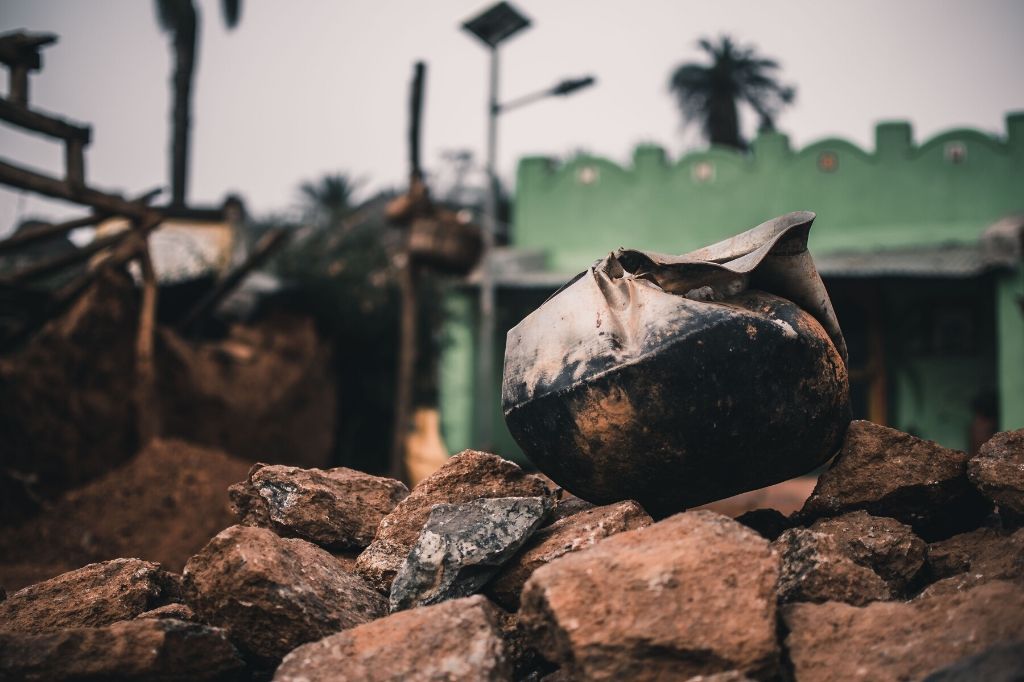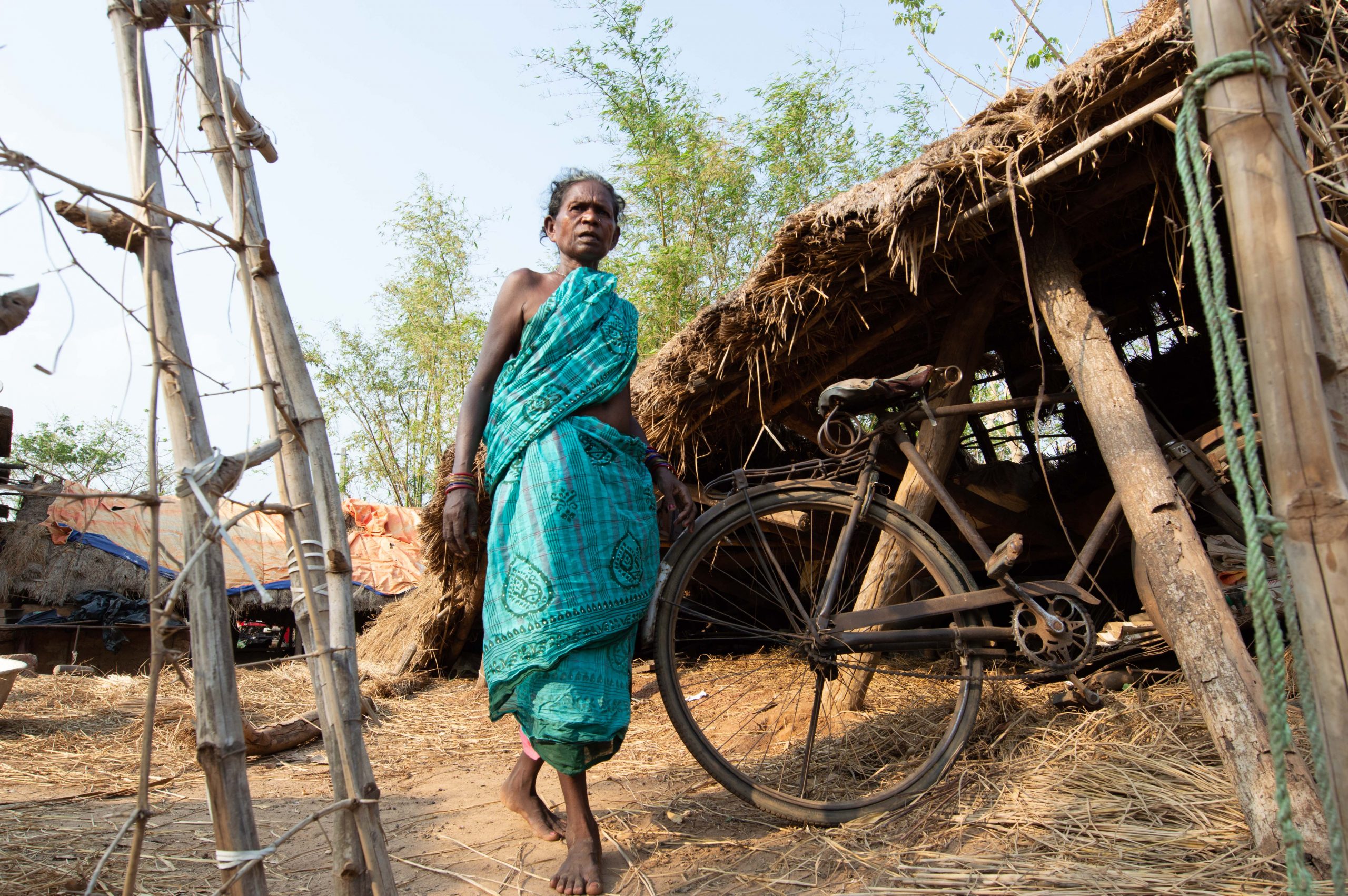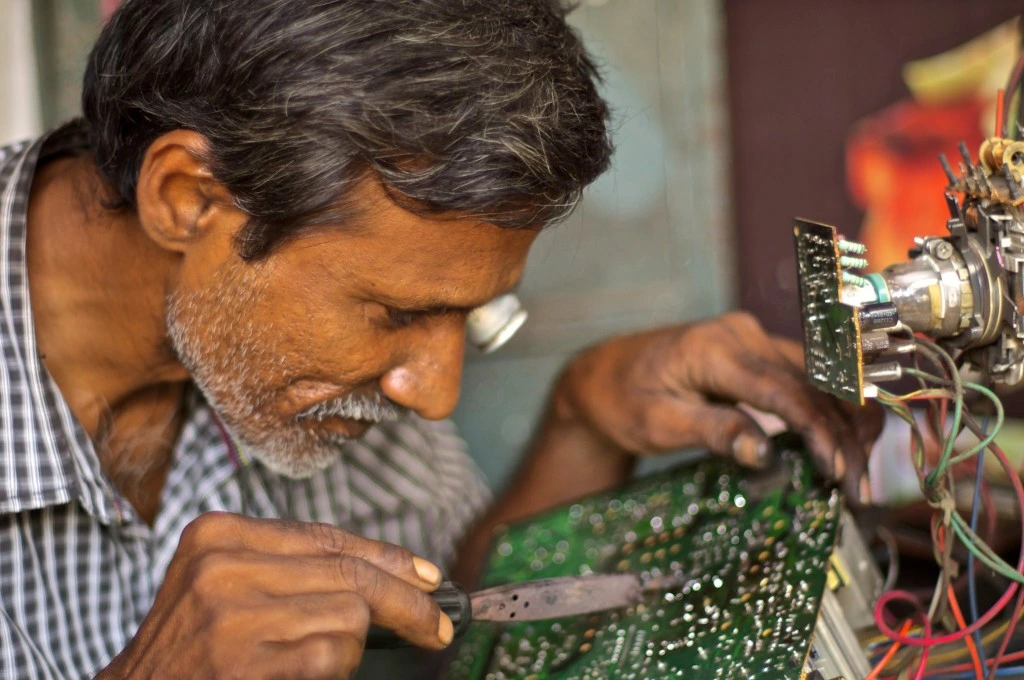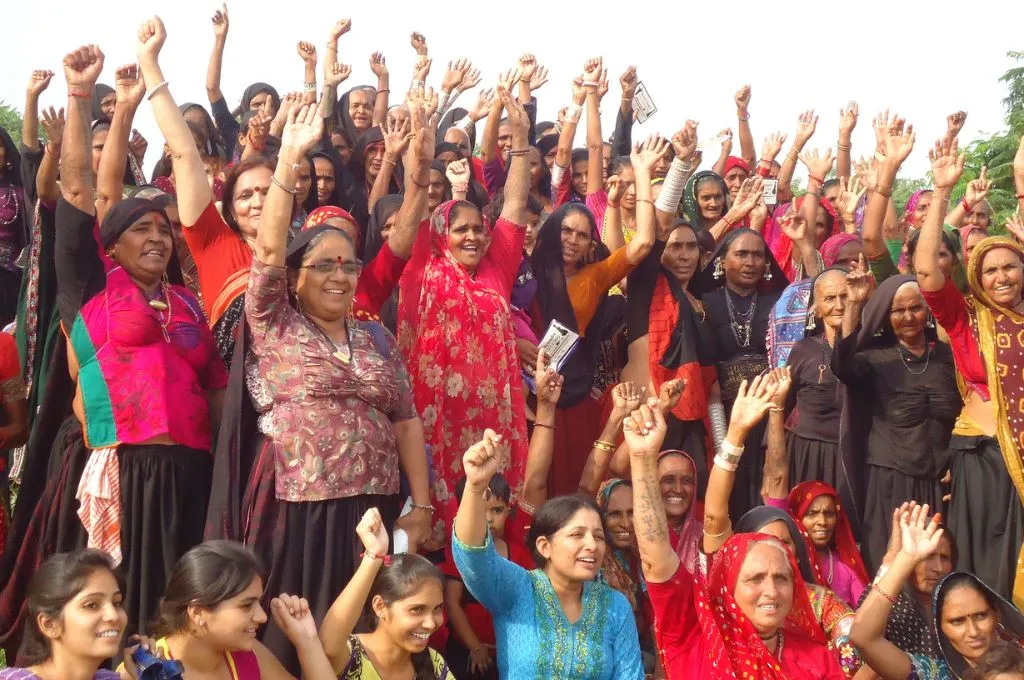Edited transcript of the episode:
1.23
Rachita: On today’s episode, I’m talking to K K Shailaja and Liby Johnson. K K Shailaja is an Indian politician and the former health minister of Kerala. She has received national and global recognition for her leadership and handling of the Nipah virus outbreak in Kerala in 2017 and the COVID-19 pandemic. Before entering active politics, she was a high-school physics teacher, which is why she’s also affectionately referred to as Shailaja Teacher by many.
Liby Johnson is the executive director of the nonprofit Gram Vikas, based in Odisha. He has more than 25 years of experience in grassroots and policy work, and has spent several years working in disaster management. He coordinated Gram Vikas’s relief, rehabilitation, and reconstruction activities after the 1999 Odisha supercyclone and the 2004 Indian Ocean tsunami. He has been closely involved with pandemic relief efforts in the state.
Now we know that we will experience more pandemics in our lifetimes. We’re already seeing this with extreme weather events, thanks to climate change—unseasonal cyclones, monsoons, heatwaves, and landslides. Their frequency, intensity, and scale are only going to increase. And so resilience becomes extremely important, especially when it comes to vulnerable populations who tend to bear the brunt of many of these disasters most acutely. We need well-functioning social security systems, local governance needs to be strong, and people must have access to basic services and entitlements.
With COVID-19 especially, there’s been a lot of talk about building back better. But if we continue to face recurring disasters and the interval between those disasters continues to reduce, the question arises: Can we build back better? And what does that really mean? Ultimately, isn’t a conversation about disaster management really just a conversation about inclusive development?
Shailaja Teacher, Liby, the two states where you work—Kerala and Odisha—have both had a long history of dealing with disaster. And so both have very sophisticated mechanisms of disaster preparedness and early warning systems. But both states are also at very different stages of development. I’d like us to have a conversation about what resilience means in both of your contexts, and what lessons the pandemic has taught us that we can take forward as we plan for the future.
So to start with you, Liby, can you tell us a little bit about the socio-economic and demographic context of Odisha? Were there pre-existing factors that either aided or hampered pandemic relief efforts in the state?
Liby: Odisha is a child of disaster, and natural disasters have been affecting the state now for many years. In the last five years or so we’ve had annual disaster events—cyclones or floods—recurring on an unprecedented scale. And the last two years, of course, we have had the COVID-19 pandemic. In the middle of that, in 2021, there was the cyclone coming and hitting us in the north-eastern coast of Odisha. So we’ve had to really struggle in the last couple of years.
The Government of Odisha has really put in place some serious, strong early warning systems.
The Government of Odisha has really put in place some serious, strong early warning systems, and one of the advantages of those is that in disasters such as cyclones, we don’t lose life any more. And compared to what we saw in the 1999 supercyclone, that’s huge progress. Having said that, 40 percent of Odisha has either scheduled caste or scheduled tribe communities, about two-thirds of the geography is hills or plains or large forests. The coastal part of Odisha, which is the remaining third, has a high density of population and varied occupational profiles. About one-third of Odisha’s GDP comes from industries—largely mining and mineral-processing industries—which means that there’s a lot of ongoing impact on natural resources, forests, and water on a daily basis. We have five large river basins and annual floods. Compared to that, we have one of the lowest rates of urbanisation in India. So, you are talking about an economy that is very, very rural agrarian, but agriculture is only contributing 15 or 16 percent of the gross state product, which means huge amount of migration.
Now, I think all these factors together contribute to increasing Odisha’s vulnerability when it comes to an event like COVID-19. And during the first wave, when migrants returning made a lot of news across India, Odisha faced problems because of the large number of workers who returned from Surat, Bombay, and Pune, bringing in infection in substantial numbers. And the state was not really prepared because we don’t have healthcare facilities at the lowest end. The state did try to respond by making panchayats more responsible, etc. But the Panchayati Raj system in Odisha is in its infancy, and its ability to react rapidly and in a high quality is still limited. So you have all these factors—natural, demographic, and socio-economic—that put Odisha at the receiving end of some of these difficulties.
06.45
Rachita: Shailaja Teacher, I’d like to ask you the same question. Could you talk about the local context in Kerala, and specifically any pre-existing conditions that you feel helped with pandemic relief efforts, as well as those that perhaps didn’t.
Shailaja Teacher: I think Kerala is facing the same situation as Odisha, and our state is also vulnerable to these floods and hurricanes. And the terrain is also like that—the landscape has hilly areas and forests. We also faced two devastating floods in 2018 and 2019, hurricanes like Ockhi, pandemics, including COVID-19. And we are trying our best to tackle these problems in Kerala. During this pandemic season we faced too many difficulties because COVID-19 carriers are going from urban to rural and rural to urban areas, and the transmission is a threat to us.
Socio-economic things are comparatively positive for Kerala as the human development index is high in Kerala. Because of social reforms like the Land Reform Act, the total literacy mission, and decentralised people planning, we can reduce poverty. Poverty alleviation processes are very good in Kerala and we’ve got very good results from them. But the demographic that is not so good is that our population density is too much in Kerala. It is 860 per square kilometre whereas our national average is something like 487. And that population density also became a great threat during the pandemic season. But our life expectancy increased because of the healthcare work; it is quite close to the life expectancy in high-income countries, which is 74 to 76 years.
But during the pandemic season, this also became a great threat. We had to save the elderly population from the contagious virus, and that became a difficulty in Kerala. We have so many achievements, but at the same time we have some drawbacks as well, such as lifestyle diseases. Lifestyle diseases are rampant in Kerala; hypertension, diabetes, cancer—they’re all here. Then during this pandemic season, we are also worried about NCDs. We tried our best to tackle this problem through people’s participation. We are using decentralised methods and people planning to tackle these kinds of difficulties. Same as Odisha, we have hilly areas but no mining. But we have so many laterite quarries and black stone quarries, which become dangerous during the flood season.
10.07
Rachita: Like you said, both states have in the last five years faced, year-on-year, consecutive disasters. And as we face each of these disasters, it kind of underlines the need for better disaster resilience. And in order for that to happen, what, to your mind, Shailaja Teacher, should the government focus on and how can we equip communities better to absorb the shocks of the disaster? And why do we think perhaps we’re not faring as well as we could be?
Shailaja Teacher: Disasters will come each and every time. We cannot stop them completely. The first part is that we should train people to face any kind of difficulties. In Kerala, we are training volunteers to face such calamities. During the floods, thousands of youths got training and they actively participated in saving people. Another thing is that they should know how to build houses or they should have proper places to move to before the calamities. And we should have some permanent shelters or permanent places to protect the people during floods and hurricanes. For pandemics or diseases, we should train people in early detection of the diseases. Even in the primary sector, we are improving our hospitals by adding laboratories to detect pandemics earlier; we are examining all cases such as influenza-like illness and also the COPD; we built very good laboratories and primary health centres. People can also check for non-communicable diseases, such as blood pressure or sugar. And we are making people aware about pandemics and diseases.
We are trying to equip people, and that is the only way to escape or come out of this difficult situation.
Our health is our responsibility. We raised a slogan in society: my health is my responsibility. And each and every one should try not to get communicable diseases and also not give communicable diseases to others, and to stop the transmission. We are teaching people how to live with the pandemic or with the infectious diseases. We are trying to equip people, and that is the only way to escape or come out of this difficult situation.
12.50
Rachita: You spoke a lot about community awareness and training people. I think one of the many great things about the way Kerala responded to the pandemic was relying on that and on a history of strong local self-government and strong community mobilisation. I wanted to ask you, Liby: When it comes to disaster resilience, what do you think in terms of where the government needs to focus to create a base level of resilience that enables people to respond better to shocks? And what are your thoughts on how the state is currently faring?
Liby: As people here in Odisha, we have a certain amount of fatalism connected to this and a lot of our responses are also designed around that slightly fatalist way of ‘this is how things are to be’. That is not a very good thing for the state. When people tend to get a little fatalistic, there’s limits to which the state can actually create systems or imaginatively come up [with solutions]. Now, one has to accept that. But having said that, what Odisha learned from the ‘99 supercyclone is how to prevent loss of lives. And like I said earlier, that we’ve done very well. And we’ve not had deaths in double digits in any of these disasters in the last seven years.
While that is remarkable, what we also see is that response to a disaster is still very ad hoc and knee-jerk. A lot of preparatory work happens, early warning systems go off, there are multiple cyclone shelters that people are moved to. But soon after—you take out the National Disaster Response Force (NDRF) going for immediate rescue and relief, clearing the path and putting electricity back in order—everything else is ad hoc, whether it is immediate food relief or shelter support.
And that is very surprising. Despite all the experiences, we still believe in the techno-managerial solution to all these problems. I think there is a huge limit to managerial technical solutions, because we are not putting citizens at the centre of them. There is still a problem to be solved. And like I said, citizens are quite fatalistic about why the problem happened and what they could have done to prevent it. So the state also becomes very prescriptive and normative.
We have to go back to the basics of development and remove this aura around disasters as being something very different.
So what is resilience? Resilience is basically long-term development; it’s my ability to withstand the shock of that event. People don’t have bank balances; a lot of their wealth is in perishable stocks, such as food items, for instance. And the difference between the family that has a bank balance and one that doesn’t is very stark. We have to go back to the basics of development and remove this aura around disasters as being something very different. And as Shailaja Teacher mentioned how Kerala has been doing it (and you see that in action at the panchayat level), there is a need to take it step by step and look at overall well-being as the issue, and resilience as one of the features of citizens’ overall well-being. I think that is how we will need to approach it rather than reacting or responding to an immediate disaster situation.
18.26
Rachita: I want to go back to something you said at the start of your response—that when a disaster happens, while there are systems in place, relief efforts can be quite ad hoc. And you talked about putting citizens at the centre. So what might that look like? Could you elaborate?
Liby: Looking at it as a citizen, how I have been dealt with by my government, I get this strong sense of being a class 2 child having done something wrong and the state being the headmaster. There is this constant sense of worry, a fear of the state. The state and the citizen have to be two adults dealing with each other. That is not the case. It is probably a parent–child relationship between the state and the citizen. This is very specifically for Odisha. What is the level of trust that a citizen has on their state and the state-manifested panchayat sarpanch, district collector, or the chief minister? In Odisha’s case, I think a large number of Odiyas have great faith in our chief minister to do right, and then he has proven that repeatedly that he will do right by his people.
But you don’t get that sense when it comes to the district where the district collector is involved. And increasingly at the panchayat level where the sarpanch may want to do a lot of things, their hands are tied, because the kind of decentralisation that’s happened in Kerala has not happened in Odisha. So the citizens want to believe the state will do the best for them. But circumstances do not prove that. So there is definitely an issue of trust in the state. And will it happen suo moto? I don’t know. I don’t think the state can create trust in itself, and this policing per se, which is what has happened in the context of COVID particularly, I don’t think is helping. So how do we put the citizen in the centre, but, at the same time, deal with the state behaving like an adult with its citizens and not like a parent going after a mischievous child?
20.47
Rachita: That’s a great analogy. Teacher, I’d like to ask you about the lessons you’ve learned. You know, the effects of climate change are worsening year-on-year. And we’re also seeing growing income inequality around the world as well as in India. So each disaster is going to wreak more havoc than its predecessor. And there’s also an element of the unknown with future disasters, very much like we saw with the pandemic. Despite all the disaster preparedness, there was enough that was unpredictable, that set many state governments and institutions back. So with Kerala’s experience of dealing with the COVID-19 pandemic, what are some lessons that we can draw from it, and how do we use those lessons to plan for what is unknown with future disasters?
Shailaja Teacher: All these things are related to governance and the social system, and that becomes politics. We can go through the problem only by thinking about changing our system. It should be a people-centred system; we should equip the people to tackle the problem, because the people are responsible for acting on these kinds of disasters. But people should be equipped for this. We should supply opportunities to the people. We should allow a perfect democracy, which means perfect opportunity, or equality of opportunity. And we should give opportunities for the poor to tackle these kinds of problems. We think about them whenever some incidents occur, which is not sufficient. We should think about them properly, and we should work hard to equip the people and the system to tackle any difficulties. That is the most important thing. Can we build something for the people to build back better? This means not reproducing the same thing after the flood or disaster. It means building back better.
There are so many technologies, but we are not applying these technologies to face this problem. And we have to improve [so that] our young scientists and technical people can come forward and find some solutions. There are so many start-ups and so many inventions. And there are so many innovations to find solutions to tackle floods or diseases. And this way as well we should work to find some solutions to tackle these problems.
23.35
Rachita: Liby, what are your lessons from the pandemic and relief efforts in Odisha? And how do we plan for what we don’t know is coming.
Liby: I can think of five points where we possibly can. And I go back to my pet peeve—citizens have to be at the centre of this. It cannot be the government. It cannot be the bureaucracy at the centre. It has to be the citizen, and let’s not forget that the state is only as strong as its weakest citizen. What applies in blockchains applies to daily political economic life in the state as well.
Second, of course, decentralise, decentralise, and decentralise further. We have remarkable examples of Kerala, Karnataka, and West Bengal of having managed local-level issues much better because the subsidiarity principle of institutional design and decision-making has been followed. So what a panchayat can decide for, let the panchayat decide; there is no need for the collector to do that.
Decentralise and let people control. We are now celebrating the silver jubilee of the decentralised planning campaign in Kerala. And if you look at the Big Bang approach they did in 1996—of giving so much money down to the panchayats and a lot of people calling it money wasted in the drain—that is not what happened. So you have to have trust in your people and that adult-to-adult relationship [between the state and citizen] that I was referring to.
The third point is about technology—we need to bring in technology. But then a lot of the new technology interventions that are coming are way beyond the average citizen’s reach. They need to be demystified. Take something like weather forecast. How do you make weather forecast relevant for the farmer for their small plot? What we get is a block-level or district-level forecast, which to the small farmer doesn’t make a difference. How do we make technology demystify it so that the last person can use it?
The fourth point, which I’m quite glad that Teacher also mentioned, is about reversing what we are doing in the public health system today, particularly in Odisha, where the focus is on building tertiary specialised care. We are neglecting primary health, whether it is a natural disaster, a pandemic, or malaria, which has now come back. But we cannot leave it to just the ASHAs and ANMs (Auxiliary nurse-midwife). There seems to be so much faith in women that we have put that the ASHA didi or the ANM didi will be able to solve primary health issues. Primary health focus has to be brought back; much better strengthening has to happen.
Building back better is no use if the weaker citizen is left behind.
And the last point is about partnerships. And the moment we talk about partnerships today, particularly in the state sector, there is an immediate reductive kind of efficiency-centric PPP. So partnership is not PPP. Partnership is about people in the middle and partnership is about improving the last mile of delivery, and making sure that no one is left behind. Because building back better is no use if the weaker citizen is left behind.
26.42
Rachita: I’m really glad that you mentioned partnerships, because there is a very skewed relationship between the state and the citizen, and there needs to be less policing, or ‘parenting’ as you said, and more partnership. But I’m curious to know your thoughts on what the role of citizens needs to be in times like this. And also, since you are from the nonprofit sector, can you talk a little bit about the role of nonprofit organisations, both in terms of long-term development and in the context of disaster relief and recovery efforts?
Liby: There were times in Odisha when nonprofits were probably the strongest delivery agents of last-mile social welfare delivery, including disaster relief, rehabilitation, and reconstruction. I remember in 1999, at Gram Vikas, the organisation I work with, we worked on rehabilitation and reconstruction for four years after the cyclone, putting things back. The state had a very minimal role. That’s not the case in 2013, after cyclone Phailian. Gram Vikas played second fiddle to the government as kind of a socio-technical partner, with the state government taking the main role in reconstruction. But for the 2018 cyclone Titli and the 2019 cyclone Fani, we were not required as a technology or social partner because the state seemed to believe it could do on its own. Habitat planning has gone completely out of the window because the state is now providing individual households financial assistance to build houses and people are making suboptimal choices when it comes to habitat planning. And that we are seeing across Odisha where individual houses are being built better, but the habitat is not any better than it was before the disaster.
So there is need for specific skills and technology orientation that nonprofits or civil society organisations bring there, particularly in the context of Odisha. And the Odisha state also needs organisations to strengthen the panchayat, which cannot happen by giving more powers to the sarpanch. Strengthening panchayats happens when the citizen–panchayat interface is strengthened. Now, given the large-spread remote locations and the wide variety in how people’s educational achievements are, you need a catalyst or a facilitating organisation to do that. And we do not have a history of people’s movements like the literacy mission or the social reform movements that Kerala and other states have had. So one has to go back to existing civil society organisations to do that, and that is the nature of partnership we need to bring in. Looking at how things can be better—more resilient—communities can be made more resilient to climate change, and all that is happening around us today.
29.30
Rachita: Before I ask Teacher the same question, could you explain what you mean when you say habitat planning?
Liby: So the house is part of a larger habitation. Where does the drainage go? Where does the greenery come from? Because if individuals choose to do house construction in their own way, there is no public common space left, there is no master plan in place. So the habitat is the house plus the living environment, the trees, the drainage, the play area for children, all that.
30.05
Rachita: Teacher, Kerala has been applauded both nationally as well as globally for the way it has responded to the COVID-19 crisis. And, of course, the government has played a very big role in a lot of the relief efforts. And there has been a lot of community support and mobilisation as well. So could you talk about what you see as the role of citizens in this work, and in partnerships with the nonprofit sector?
Shailaja Teacher: Coordination planning and human resource are the most important. In a hospital it is not sufficient to contain the virus; we want more human resource in our hospitals. But we cannot all of a sudden appoint a large number of people in hospitals. When we called for voluntary work, we asked people who were interested to register with the COVID Brigade.
Thousands of people registered, and we selected people from there. Some were doctors and nurses, and some were common people. We appointed the doctors and nurses in hospitals on a contract-basis or for short periods; other people we utilised in community kitchens and food supply. And a large number of people worked hard in the COVID-containing system. We got people’s participation at a large scale.
The joint activity, or the collective activity, is the most important thing, as is the correlation of all the stakeholders—the food supply department, the police, and the local self-government. Under the leadership of the district directors the revenue department coordinated things, and the health department coordinated all the health issues. Planning and corrective activity are also important.
32.16
Rachita: Thank you both so much for sharing your wisdom and experiences of dealing with disasters across two similar, yet quite different, contexts. Like you said, Liby, we need to change the existing relationship between the state and the citizen, because it lacks trust, and perpetuates an unequal power dynamic. And we need to think of people-centred development, which Kerala is a great example of.
When it comes to disasters, we can talk about resilience, and we can talk about building back better, but what we really need to focus on is overall well-being, of which resilience is just one aspect.
It’s only when we achieve inclusive, sustained development that people will be better equipped to respond to and absorb the shocks of future disasters.
—
Read more
- NREGA: A pathway to climate resilience
- Unpaid claims for natural disasters at over INR 1,705 crore, says IRDA report
- Buffeted by cyclones and floods, Mumbai enacts its very own climate action plan
- Lessons to be learned from ‘Kerala flood response’ and building disaster resilience
- Following the Odisha example for developing community based disaster management in India
- Odisha’s affordable and disaster resilient houses
- India needs state-specific disaster readiness plans
